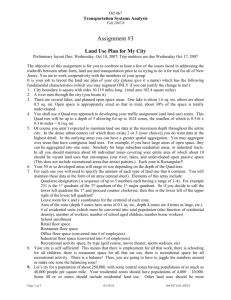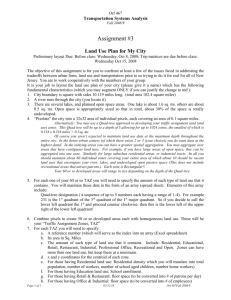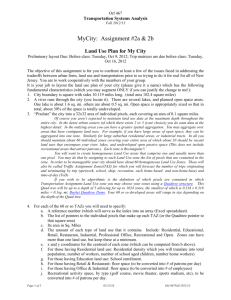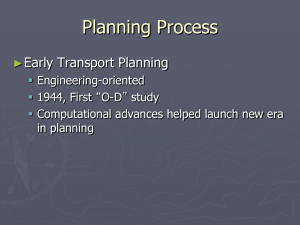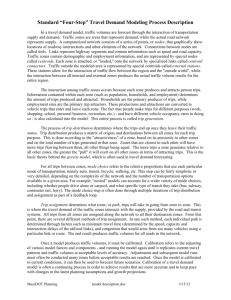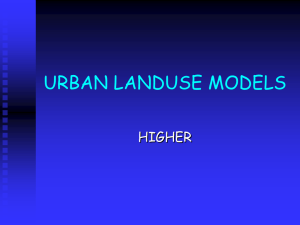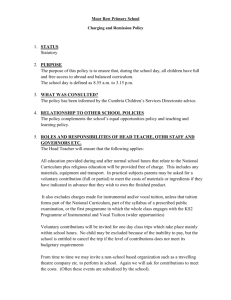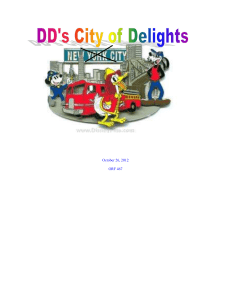Land Use Plan for My City
advertisement
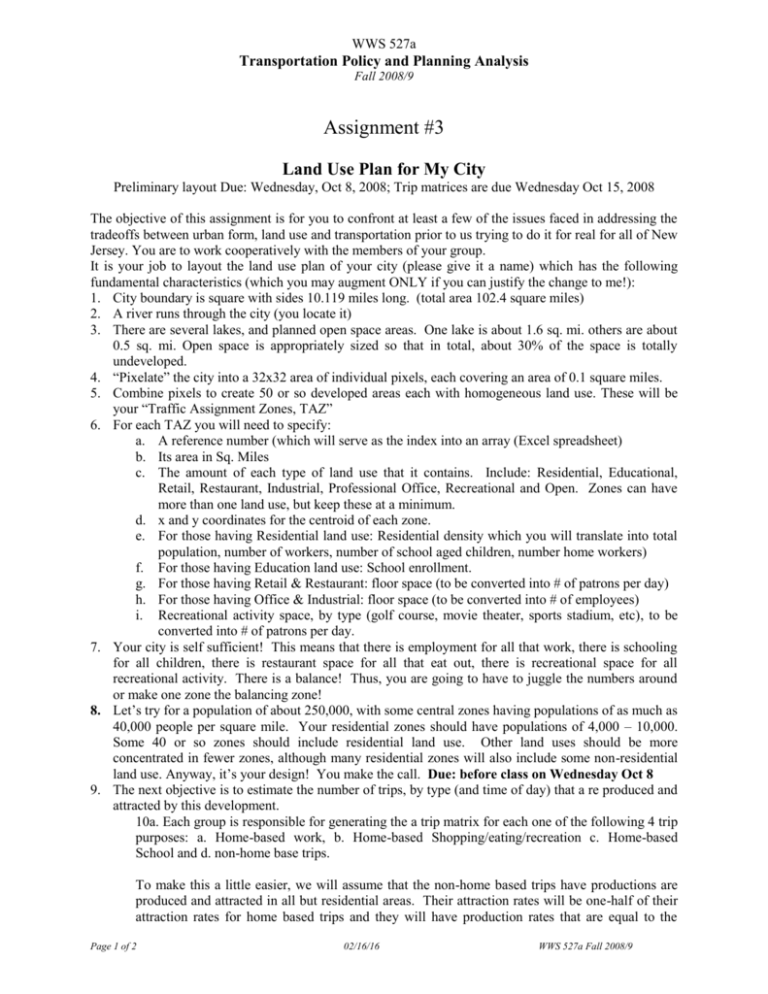
WWS 527a Transportation Policy and Planning Analysis Fall 2008/9 Assignment #3 Land Use Plan for My City Preliminary layout Due: Wednesday, Oct 8, 2008; Trip matrices are due Wednesday Oct 15, 2008 The objective of this assignment is for you to confront at least a few of the issues faced in addressing the tradeoffs between urban form, land use and transportation prior to us trying to do it for real for all of New Jersey. You are to work cooperatively with the members of your group. It is your job to layout the land use plan of your city (please give it a name) which has the following fundamental characteristics (which you may augment ONLY if you can justify the change to me!): 1. City boundary is square with sides 10.119 miles long. (total area 102.4 square miles) 2. A river runs through the city (you locate it) 3. There are several lakes, and planned open space areas. One lake is about 1.6 sq. mi. others are about 0.5 sq. mi. Open space is appropriately sized so that in total, about 30% of the space is totally undeveloped. 4. “Pixelate” the city into a 32x32 area of individual pixels, each covering an area of 0.1 square miles. 5. Combine pixels to create 50 or so developed areas each with homogeneous land use. These will be your “Traffic Assignment Zones, TAZ” 6. For each TAZ you will need to specify: a. A reference number (which will serve as the index into an array (Excel spreadsheet) b. Its area in Sq. Miles c. The amount of each type of land use that it contains. Include: Residential, Educational, Retail, Restaurant, Industrial, Professional Office, Recreational and Open. Zones can have more than one land use, but keep these at a minimum. d. x and y coordinates for the centroid of each zone. e. For those having Residential land use: Residential density which you will translate into total population, number of workers, number of school aged children, number home workers) f. For those having Education land use: School enrollment. g. For those having Retail & Restaurant: floor space (to be converted into # of patrons per day) h. For those having Office & Industrial: floor space (to be converted into # of employees) i. Recreational activity space, by type (golf course, movie theater, sports stadium, etc), to be converted into # of patrons per day. 7. Your city is self sufficient! This means that there is employment for all that work, there is schooling for all children, there is restaurant space for all that eat out, there is recreational space for all recreational activity. There is a balance! Thus, you are going to have to juggle the numbers around or make one zone the balancing zone! 8. Let’s try for a population of about 250,000, with some central zones having populations of as much as 40,000 people per square mile. Your residential zones should have populations of 4,000 – 10,000. Some 40 or so zones should include residential land use. Other land uses should be more concentrated in fewer zones, although many residential zones will also include some non-residential land use. Anyway, it’s your design! You make the call. Due: before class on Wednesday Oct 8 9. The next objective is to estimate the number of trips, by type (and time of day) that a re produced and attracted by this development. 10a. Each group is responsible for generating the a trip matrix for each one of the following 4 trip purposes: a. Home-based work, b. Home-based Shopping/eating/recreation c. Home-based School and d. non-home base trips. To make this a little easier, we will assume that the non-home based trips have productions are produced and attracted in all but residential areas. Their attraction rates will be one-half of their attraction rates for home based trips and they will have production rates that are equal to the Page 1 of 2 02/16/16 WWS 527a Fall 2008/9 attraction rates. Because each zone will have an equal number of P and A there will tend to be a large number of intra-zonal trips. This is somewhat realistic because linked trips tend to be shorter (you are more likely to grab beer at a watering hole that is very near where you work before you go home.!? 10b. Estimate total daily person trip miles for each trip type and total for your city. To simplify the computation use (1.2 x straight line distance) as the distance between zone centroids and apply that to each trip Due: Wednesday Oct 22 Page 2 of 2 02/16/16 Alain L. Kornhauser
